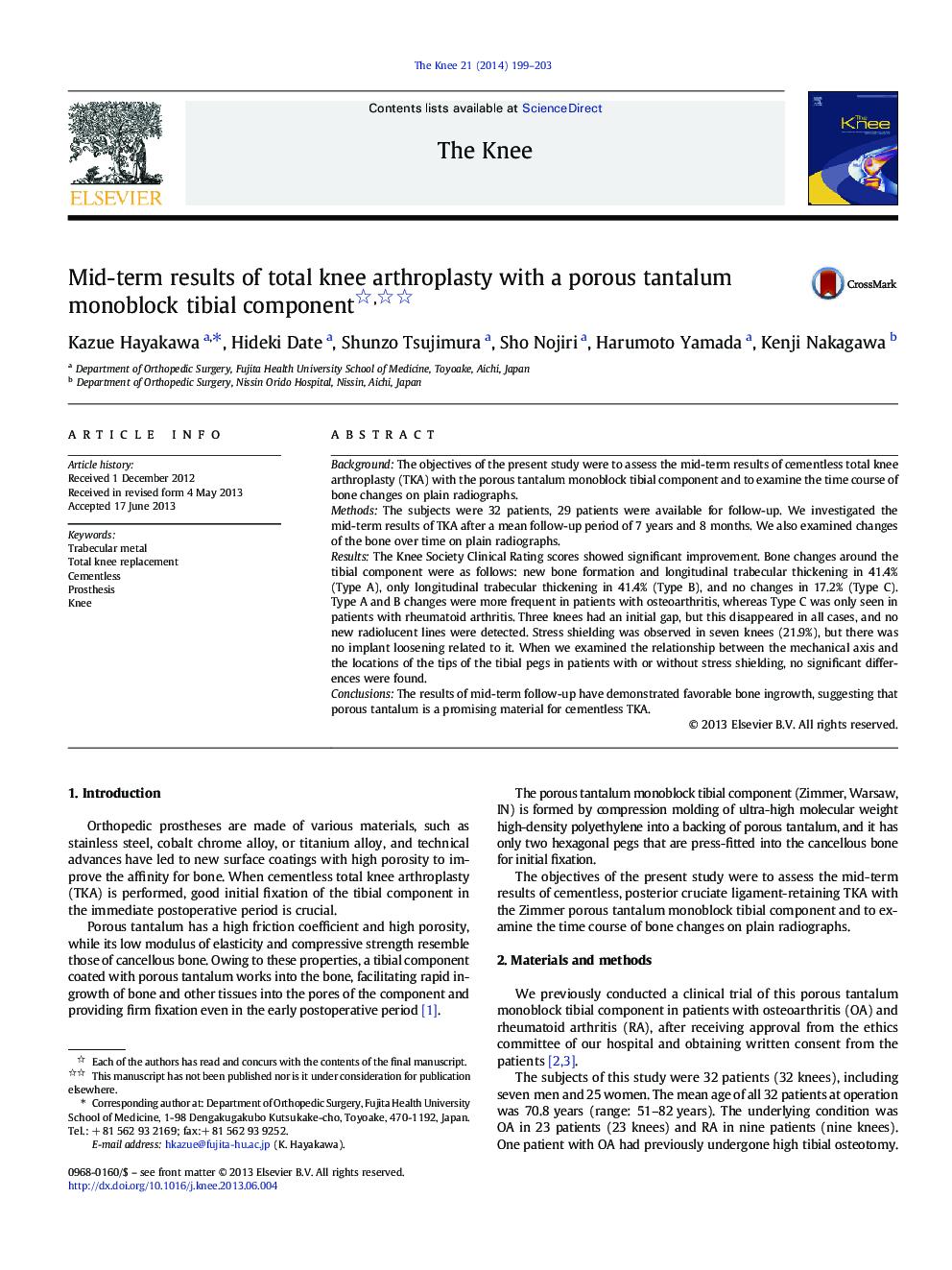| Article ID | Journal | Published Year | Pages | File Type |
|---|---|---|---|---|
| 6211251 | The Knee | 2014 | 5 Pages |
BackgroundThe objectives of the present study were to assess the mid-term results of cementless total knee arthroplasty (TKA) with the porous tantalum monoblock tibial component and to examine the time course of bone changes on plain radiographs.MethodsThe subjects were 32 patients, 29 patients were available for follow-up. We investigated the mid-term results of TKA after a mean follow-up period of 7Â years and 8Â months. We also examined changes of the bone over time on plain radiographs.ResultsThe Knee Society Clinical Rating scores showed significant improvement. Bone changes around the tibial component were as follows: new bone formation and longitudinal trabecular thickening in 41.4% (Type A), only longitudinal trabecular thickening in 41.4% (Type B), and no changes in 17.2% (Type C). Type A and B changes were more frequent in patients with osteoarthritis, whereas Type C was only seen in patients with rheumatoid arthritis. Three knees had an initial gap, but this disappeared in all cases, and no new radiolucent lines were detected. Stress shielding was observed in seven knees (21.9%), but there was no implant loosening related to it. When we examined the relationship between the mechanical axis and the locations of the tips of the tibial pegs in patients with or without stress shielding, no significant differences were found.ConclusionsThe results of mid-term follow-up have demonstrated favorable bone ingrowth, suggesting that porous tantalum is a promising material for cementless TKA.
